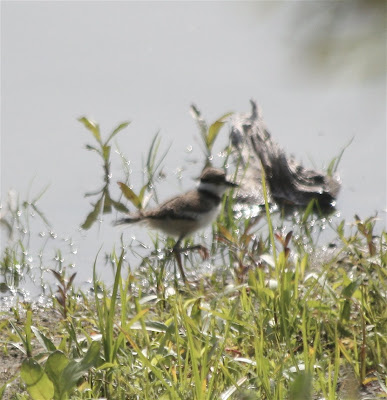
Yes, I should have put a picture of a Least Sandpiper here. But this one turned out better.
This week, it occurred to me that it has been months since I've been to Bolsa Chica. I had been too busy to go when the Little Blue Heron was spotted there last month, and since spring started, I've been more in a mood to look for songbirds. It was definitely time for a shorebird fix.
I wasn't expecting to find much (next to nothing has been posted on Orange County Birding or Orange County Rare Bird Alerts in recent weeks), and I wasn't disappointed. The Little Blue Heron was long gone, and I saw nothing but the usual suspects. Still, it was like visiting old friends: I had forgotten how pleasant it is to spend time with them.
On the footbridge were the usual assortment of photographers and children being dragged out by their parents for an "educational" experience. The birds by the bridge are used to people, and it's easy to get close to them. The Forster's Tern above let me stand only 4 feet from him, and the Savannah Sparrows were singing only a couple of yards from me:

In the fenced-off area behind the footbridge were nesting Least Terns and Snowy Plovers. Fuzzy little babies of both species were running across the sand like tiny wind-up toys. A nesting Killdeer just off the path did her broken wing display as I walked past her. Black-bellied Plovers were everywhere, and one of them was coming into (or moving out of?) its breeding plumage:

Black Skimmers were also numerous, and seemed to be feeding on every possible body of water. I never tire of watching them.

It had been too long since I'd seen all these birds together. I realized that I even missed that weird Bolsa Chica smell--that odd mix of seawater, rotting vegetation, lighter fluid, and grilling hot dogs from the beach across the street—that always makes me think of sunsets on Sunday afternoon (the time when Glenn and I usually ended up going there). It's good to see old friends again, even if they don't have a whole lot going on.















